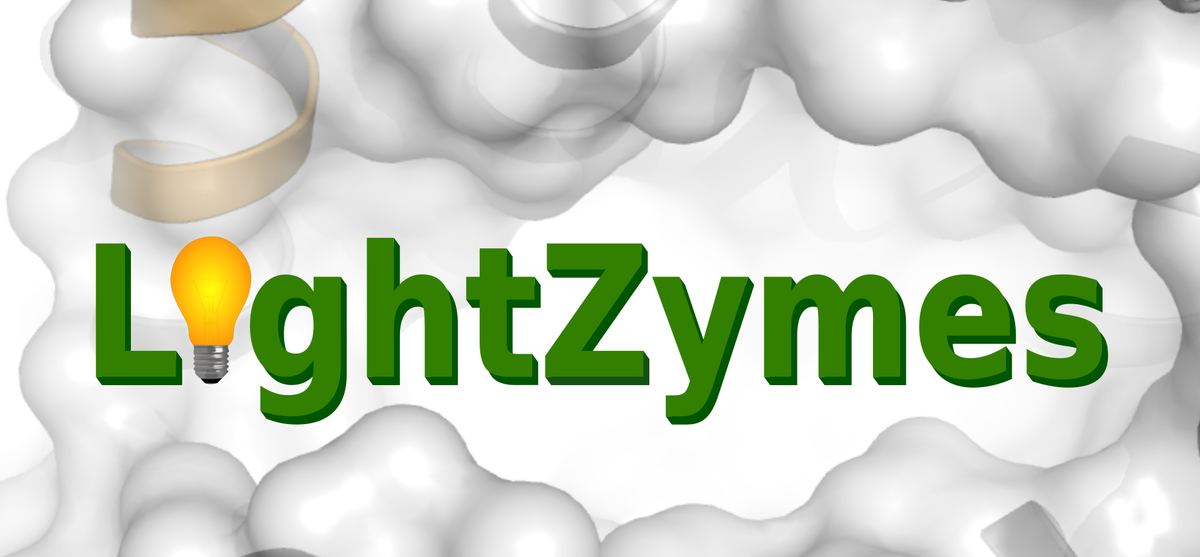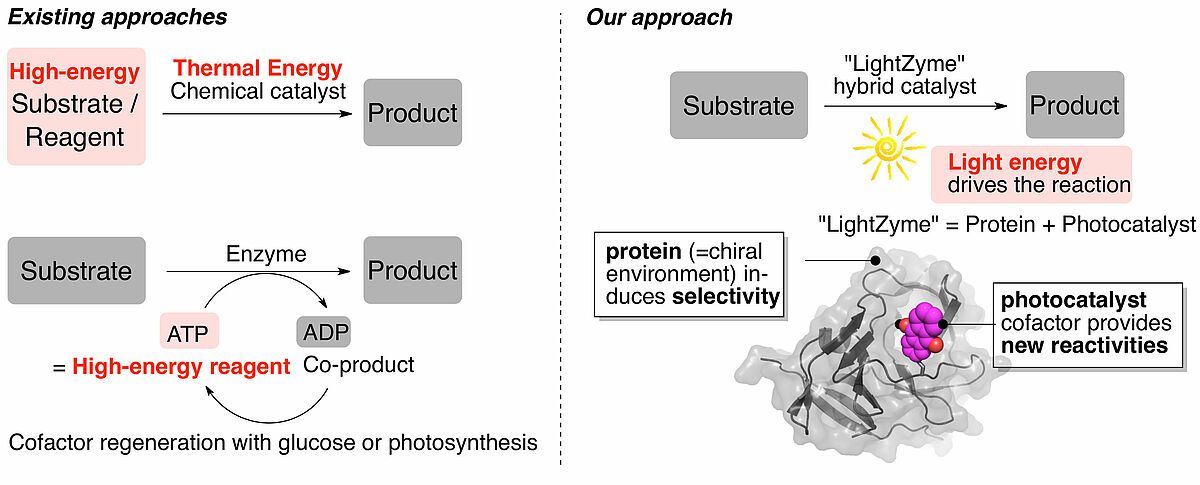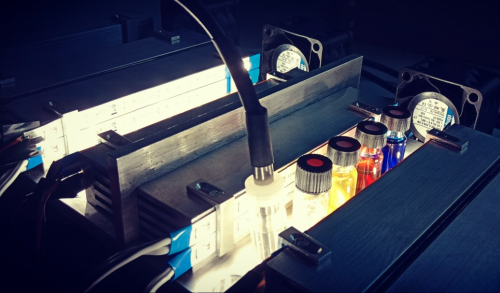LightZymes


Background and Motivation
Although Nature has demonstrated its great potential to evolve diverse enzymes to construct complex pathways, limited set of enzymatic reactivities have been developed during evolution. Enzymes are composed out of 20 amino acids, which allow a restricted set of catalytic mechanisms. With the help of (a limited number of) small organic molecules – cofactors – nature ex-panded this range significantly. However, chemists often desire reactions that are not known in nature. The creation of non-natural enzymes with an expanded reaction scope is therefore an important step to grow the field of biotechnology. One example of desired enzymatic reactions are transformations driven by light that can be catalyzed by small organic dyes. Light is a cheap and renewable energy source, which can fuel reactions that otherwise would need reagents providing high energy. Furthermore, light-driven reactions often enable a complementary range of reactivities, which cannot be obtained via classical chemical approaches. However, it is not possible to render photo-organocatalyzed reactions stereoselective in most cases, which is a desired goal for applying these reaction in the production of pharmaceutical ingredients or building blocks that are intermediates in their synthesis and require a high optical purity.

Project goals
The research project "LightZymes" funded by the European Research Council (ERC Starting Grant) aims to expand the chemical repertoire of naturally evolved enzymes to selective photo-catalyzed conversions of small organic molecules. We want to combine the natural abilitiy of enzymes to create selectivity to a catalyzed reaction by incorporating organic photocatalysts as non-natural cofactors. To this end, our laboratory employs a variety of different methods and techniques such as:
- genetic code engineering
- bioconjugation
- organic synthesis
- computational protein design
- directed evolution
- photoreactor development
- standard methods in protein biochemistry and molecular biology


Self-built photoreactor for model reaction development and enzyme activity screening.
Publications
Zhang W, Fueyo E F, Hollmann F, Martin L L, Pesic M, Wardenga R, Höhne M, Schmidt S (2019). Combining Photo-Organo Redox- and Enzyme Catalysis Facilitates Asymmetric C-H Bond Functionalization. Eur. J. Org. Chem., 80-84. DOI: 10.1002/ejoc.201801692
Team
- Dr. Martin Termathe
- Marco Seifert M.Sc.
- Markus Averbeck M.Sc.
- Manideep Kollipara M.Sc.
- Jonas Wolf B.Sc.
